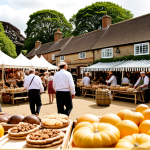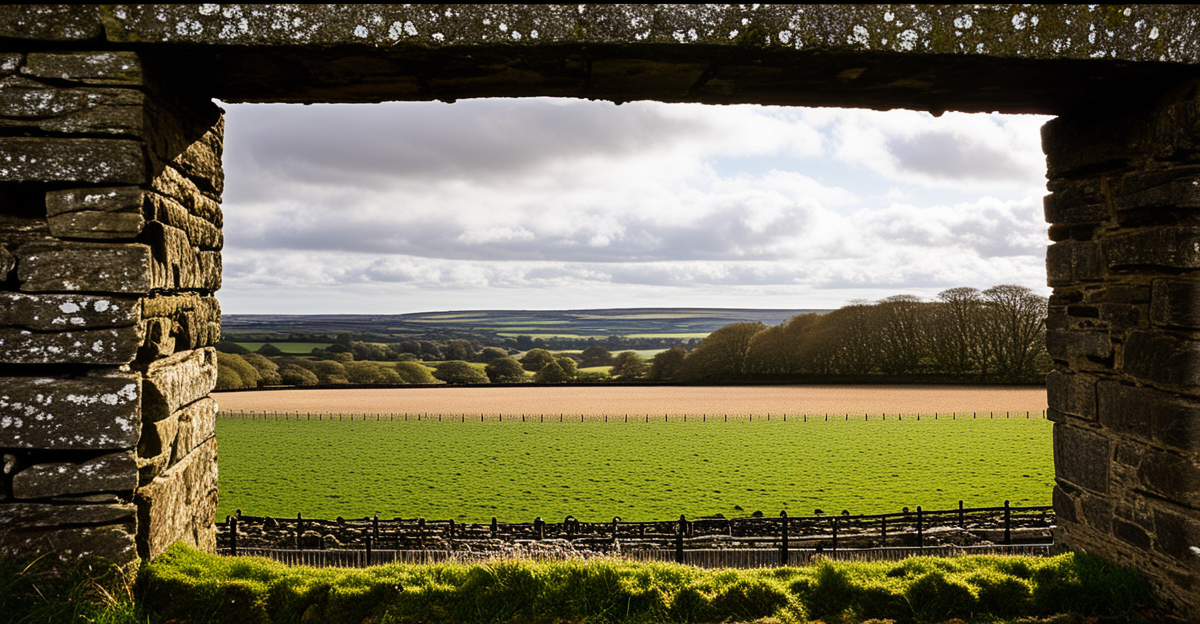Optimal Seasons for Visiting the UK’s Most Iconic Landmarks
Timing is crucial when planning to explore the UK’s landmarks. Choosing the optimal seasons can transform your experience, balancing pleasant weather, manageable crowds, and unique seasonal events. Understanding these factors helps you enjoy sites like Stonehenge, Edinburgh Castle, or the Tower of London to their fullest.
Weather plays a pivotal role in the best time to visit the UK. Spring and early autumn offer mild temperatures and less rain, enhancing outdoor sightseeing without the discomfort of harsh weather. These periods also avoid summer peak crowds, making visits more peaceful. Conversely, summer brings vibrant festivals and long daylight hours but can be crowded and costly.
Also read : Why nature enthusiasts flock to the uk: discover its wild allure
Crowd size is another key aspect. Visiting during shoulder seasons reduces wait times and provides quieter moments for reflection or photography—vital for iconic UK landmarks. Planning around school holidays or major UK festivals can also prevent overcrowding.
When arranging your trip, consider booking accommodations and transport well in advance to secure better rates and availability. Incorporate local event schedules, weather forecasts, and venue opening times into your itinerary. These UK travel tips ensure a seamless, memorable exploration of Britain’s heritage sites year-round.
Also to discover : Discovering the uk’s cultural tapestry: a traveler’s guide to authentic experiences
Optimal Seasons for Visiting the UK’s Most Iconic Landmarks
Timing plays a crucial role in enhancing your experience at UK landmarks. The optimal seasons for visiting not only depend on weather but also on crowd density and special events. For example, spring and early autumn generally offer milder weather and fewer tourists, making them ideal for a more relaxed visit.
When considering the best time to visit UK attractions, it’s essential to focus on the balance between pleasant weather and manageable visitor numbers. Summer is popular but often overcrowded, while winter may provide unique ambiance despite colder and wetter conditions. Seasonal events add charm but can increase footfall, so planning ahead helps avoid frustration.
Practical UK travel tips include booking accommodations well in advance, particularly during peak seasons or festival periods. Also, factoring in local transportation schedules and potential weather changes ensures smoother tours. In summary, choosing the right season impacts everything from scenic views to accessibility, creating a more memorable visit to the UK’s historic landmarks.
Seasonal Guide to Major UK Landmarks
Understanding the optimal seasons for visiting key UK landmarks can significantly enhance your experience. For Stonehenge, late spring (April to June) offers fewer crowds and often dramatic skies that highlight the monument’s mystique. This period also benefits from milder weather, making it the best time to visit UK outdoors sites without the summer rush.
At the Tower of London, winter months from November to February present quieter times for visitors, ideal for avoiding busy peak seasons. However, special events like the Christmas illuminations add unique charm during the holiday season. Spring and autumn see moderate crowds and pleasant weather, balancing accessibility and atmosphere.
For Edinburgh Castle, summer is popular due to festivals like the Edinburgh Fringe, but this can mean large crowds. Early autumn provides a landmark travel guide advantage with fewer visitors and spectacular fall scenery enhancing the castle’s visual appeal.
Incorporating these seasonal insights into your travel plan allows you to tailor your visits around both crowd levels and atmospheric highlights, enriching your UK sightseeing adventure. Use UK travel tips to align your itinerary with these seasonal peaks and lulls for a smoother, rewarding trip.
Seasonal Guide to Major UK Landmarks
When planning UK sightseeing, understanding the best time to visit landmarks can dramatically improve your experience. Take Stonehenge, for instance. The optimal seasons for visiting are late spring and early autumn. During these months, you’ll find fewer crowds and often dramatic skies that enhance the monument’s mystique. This period also aligns with milder weather, adding comfort to your visit.
The Tower of London offers varying experiences depending on the season. Winter months tend to be quieter with shorter queues, ideal for those wanting to explore without the hustle. Summer, however, features lively events like the Ceremony of the Keys but sees heavier foot traffic. Planning your visit during shoulder seasons gives a balance of accessibility and atmosphere.
Edinburgh Castle’s visual appeal shifts with the seasons. Spring brings blossoming gardens, summer offers vibrant festivals nearby, while autumn displays stunning fall colors against the fortress backdrop. Winters are quieter, with fewer tourists but a more serene atmosphere. Adjusting your travel dates based on these seasonal highlights lets you capture different facets of this iconic landmark.
Incorporate this landmark travel guide into your itinerary to maximize enjoyment during your seasonal UK visits.
Optimal Seasons for Visiting the UK’s Most Iconic Landmarks
Choosing the optimal seasons to explore UK landmarks profoundly influences your experience. Weather, crowd size, and events combine to shape each visit. The best time to visit UK depends on balancing these factors for comfort and enjoyment.
Weather plays a crucial role. Mild and drier conditions in spring and early autumn enhance outdoor activities, minimizing weather-related disruptions. Conversely, winter can bring quietness but also harsher conditions affecting accessibility.
Crowds fluctuate dramatically with seasons. Peak summer attracts large visitor numbers, often causing longer waits and less personal space at landmarks. Off-peak seasons, particularly late autumn and winter (excluding holidays), offer a more tranquil experience.
Seasonal events add both charm and complexity. Festivals and holiday celebrations provide cultural richness but tend to coincide with increased footfall. Being aware of event schedules prevents unexpected congestion.
Key UK travel tips for timing your visit include:
- Booking accommodations early to guarantee availability during busy seasons.
- Monitoring weather forecasts to pack appropriately.
- Planning transport connections around seasonal service changes.
By integrating these insights into your itinerary, you optimize comfort and accessibility, ensuring a memorable visit to the UK’s historic treasures.
Optimal Seasons for Visiting the UK’s Most Iconic Landmarks
Choosing the optimal seasons for visiting UK landmarks is key to a rewarding experience. Weather, crowd size, and seasonal events all shape the best time to visit UK sites. Mild temperatures in spring and early autumn create comfortable conditions for outdoor exploration, while summer’s long daylight offers extended sightseeing despite larger crowds.
Understanding peak and off-peak periods helps manage visitor numbers. Popular landmarks often experience heavy foot traffic during summer and school holidays, making shoulder seasons valuable for a quieter visit. Special events, like festivals or historical reenactments, enhance cultural exposure but may increase crowds; timing visits to coincide with or avoid these can tailor your experience.
Practical UK travel tips include booking accommodations and transport early, especially during busy times. Checking opening hours and local event calendars helps optimize your itinerary around accessibility and unique seasonal activities. Photography enthusiasts can benefit from planning visits during seasons with distinctive natural lighting or scenery.
Overall, strategically selecting when to visit based on these factors ensures your landmark tours balance convenience with immersion, revealing the rich heritage of the UK in its best light.
Optimal Seasons for Visiting the UK’s Most Iconic Landmarks
Selecting the optimal seasons to visit UK landmarks significantly enhances your experience by balancing weather, crowds, and special events. The best time to visit UK often falls in spring or early autumn, when milder weather and smaller crowds combine for a more comfortable, peaceful visit. These seasons also allow you to enjoy seasonal scenery without the summer rush.
Crowd size fluctuates greatly, with summer being the busiest and winter the quietest. When planning your visit, consider how festivals and holiday events affect footfall; these can enrich your experience but may also lead to longer waits. Being aware of these patterns helps you avoid unexpected congestion.
To optimize your trip, adopt key UK travel tips: book accommodations and tickets early to ensure availability during peak times, check local transport options as some services adjust seasonally, and pack clothing suitable for variable UK weather. Planning with these factors in mind leads to greater accessibility and enjoyment.
In essence, timing your visit around the optimal seasons makes your UK landmark exploration memorable, blending natural beauty, cultural events, and manageable crowds.
Optimal Seasons for Visiting the UK’s Most Iconic Landmarks
Timing your visit is essential to maximize enjoyment.
Selecting the optimal seasons for exploring UK landmarks depends on several key factors: weather, visitor crowds, and seasonal events. The best time to visit UK sites typically aligns with milder, drier weather in spring and early autumn. These periods minimize discomfort and enhance outdoor experiences at places like Stonehenge and Edinburgh Castle.
Crowd levels also dramatically influence your visit. Peak summer attracts many tourists, often resulting in long queues and crowded spaces, especially at iconic landmarks like the Tower of London. To avoid this, consider shoulder seasons when visitor numbers are lower but weather remains pleasant.
Seasonal events add richness but can increase foot traffic. Planning your trip around these events lets you either partake in cultural celebrations or escape crowds, depending on your preference.
Effective UK travel tips for a smoother visit include:
- Booking accommodations and transportation early—especially during peak seasons or festivals.
- Checking opening times and event schedules to optimize your itinerary.
- Preparing for variable weather, ensuring you can enjoy outdoor sights comfortably.
By balancing these factors, your UK landmark tour becomes both accessible and memorable year-round.
Optimal Seasons for Visiting the UK’s Most Iconic Landmarks
Timing your visit to UK landmarks is crucial, as optimal seasons greatly influence your overall experience. The best time to visit UK depends on several intertwined factors: weather conditions, crowd size, and special seasonal events. Mild weather in spring and early autumn typically enhances comfort for outdoor sightseeing, while avoiding peak summer crowds improves accessibility and enjoyment.
Weather impacts not only comfort but also the aesthetic appeal of landmarks. Clear skies and gentle temperatures allow for uninterrupted exploration, whereas heavy rain or cold might limit outdoor activities. Crowds tend to swell during school holidays and summer, causing longer queues and diminished personal space, which can detract from your visit.
Seasonal events, like local festivals or historical reenactments, enrich the cultural experience but often attract large groups. Being mindful of these schedules enables better planning to either coincide with or circumvent busy periods. Employing practical UK travel tips such as early bookings for accommodations and transport is essential, particularly during popular travel windows.
Ultimately, aligning your trip with optimal seasons ensures landmark accessibility, scenic enjoyment, and a smoother, more rewarding exploration of Britain’s treasured sites.






